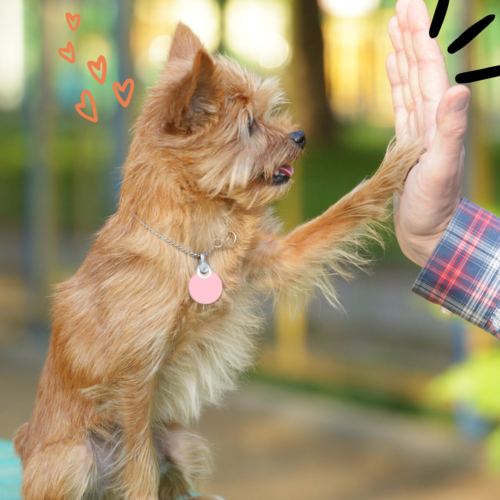Hey there, fellow dog moms and pops! 🐶 Let’s get real about something we’ve all experienced: those moments when our furry bestie seems more like a chaos agent than a loyal companion. Whether you’re scrolling through Instagram with your pup by your side or juggling work-from-home life with a four-legged roommate, dog behavior modification is about to become your new superpower for your superpup.

The Real Talk on Dog Behavior: It’s Not Just Training, It’s a Lifestyle
Listen up – behavior modification isn’t some mysterious science reserved for professional dog trainers. It’s about understanding your dog’s emotional world and creating a relationship that’s both Instagram-worthy and genuinely fulfilling. In 2025, we’re all about holistic, compassionate approaches that treat our dogs as the complex, feeling beings they are.
Why We’re All Changing the Dog Behavior Game
Our generations aren’t just pet owners – we’re pet parents. We’re ditching outdated, punishment-based training methods and embracing approaches that prioritize mental health, mutual understanding, and emotional intelligence. Here’s why:
- We see our dogs as family members, not just pets
- Mental health awareness extends to our furry friends
- We’re more likely to invest in understanding behavior over quick fixes
- Technology and access to information have transformed how we approach dog care
The Mental Health Connection
Fun fact: Your dog’s behavior is directly linked to their mental and emotional well-being. Just like us, dogs experience anxiety, stress, and complex emotions. By understanding this, we’re not just training – we’re creating emotional support systems for our four-legged companions.
Decoding Common Behavior Challenges: A Millennial’s Guide
Anxiety: The Silent Struggle
Millennials and Gen Z understand mental health struggles, and our dogs are no different. Separation anxiety isn’t “bad behavior” – it’s a legitimate emotional response.
Red Flags to Watch:
- Destructive behavior when you’re not home
- Excessive vocalization
- Unusual clinginess
- Physiological stress symptoms like excessive panting
Social Media and Dog Behavior: Breaking the Comparison Cycle
In the age of perfectly curated pet content, remember: every dog is unique. That viral training hack might not work for your specific furry friend, and that’s 100% okay! Your pup has their own personality and mind. We just need adjust to our team to work as a team!

Modern Behavior Modification Techniques
The following are tools and tips to use!
Tech-Enabled Training
- Behavior tracking apps
- Online training communities
- Virtual consultations with dog behaviorists
- AI-powered training recommendations
Sustainable and Ethical Approaches
- Positive reinforcement over punishment
- Understanding individual dog personalities
- Holistic approaches combining physical and mental wellness
- Environmentally conscious training tools and treats
Self-Care for Dog Parents: Managing Your Expectations
Behavior modification is as much about your journey as your dog’s. Pro tips for maintaining your sanity:
- Set realistic goals
- Celebrate small victories
- Practice self-compassion
- Connect with support communities
- Remind yourself: Progress isn’t linear
Budget-Friendly Behavior Modification
We get it – professional training can be expensive. Budget-friendly alternatives:
- YouTube tutorials from certified trainers
- Free online training communities
- DIY training kits
- Sliding scale behavioral consultations
- Community training groups

Tech and Wellness: The Future of Dog Behavior
Emerging trends for 2025:
- Wearable tech for dogs
- Personalized nutrition and behavior plans
- Telehealth for pet mental wellness
Conclusion: Your Dog, Your Journey
Behavior modification isn’t about creating a perfect TikTok dog. It’s about building a genuine, supportive relationship that grows and evolves. You’re not just training a dog – you’re building a lifelong partnership based on understanding, respect, and unconditional love.
Remember: You’ve got this, and so does your furry friend! 🐾❤️



Leave a Reply